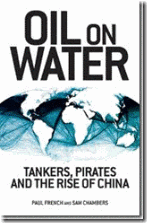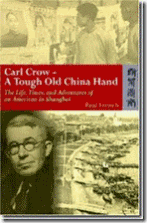It’s not that I’m so smart. But I stay with the questions much longer.[i]
― Albert Einstein
One of the most useful and innovative leadership skills I know is the ability to think gray and free. The idea comes from the late Steven Sample, engineer, professor, and successful, long-term president at the University of Southern California who transformed the institution during his nineteen years in office.
I love the process of thinking gray and free – it’s not easy but it works, is supported by neuroscience, can be taught, and stretches everyone’s creative potential. And it’s fun! Can’t get much better than that!
The rationale for learning to think gray and free goes something like this:
Problems are problems because what has usually worked in other situations does not work with what you now face. Those are the times you need to harness your creative best for breakthroughs in your thinking so you can identify fresh options. You need ways to break out of your cognitive ruts, but human nature doesn’t make that easy!
Under stress and in the face of major challenges, it is easy and almost automatic to rush to judgment in dealing with new information or situations by labeling them good or bad, right or wrong, true or false. We want fast and decisive action to relieve our stress. But snap judgments in difficult times can put you on a dead-end road. Thinking that you are right, you keep doing what you’ve always done: the problem continues, frustration mounts, stress levels rise, and you double down on what you’ve always done. You can see where all that will land you!
Not anymore! Here’s where thinking gray and free[ii] comes into the picture.
When asked, leaders and managers often say that they try to “consider all the options” before reaching a difficult decision. Steven Sample disagrees. They may consider all their options, but do so within the constraints of their current thinking patterns and approaches. Learning to think gray and free is “an unnatural act” that forces you to remain unresolved and open to fresh solutions beyond your comfort as a way to tap into unused cognitive pathways. That’s what can lead to your greatest insights, free you from the bounds of convention, and allow your natural creativity and intellectual independence to shine. As you move beyond the temptation to plow ahead and fix things quickly, you will also see more clearly what matters – and doesn’t.
Sample’s favorite way to stimulate that kind of thinking is to contemplate problems from absolutely outrageous positions and in impossible ways. Literally! The process of arriving at his highly successful patent design for a dishwasher control reads like something from a Charlie Chapin movie: Sample crawled on the ground to contemplate the controls from different angles and forced himself to imagine the dishwasher was being controlled by a French horn, sofa, ladybug, electrons, hay bale, and more. This thinking was so difficult that he could only sustain it for about ten minutes at a time. But after a few of these thinking sessions, he suddenly could see in his mind’s eye the complete circuit design – and a way to do it he had never contemplated before.
Innovative ideas come when you challenge your assumptions and allow yourself to revel in blue-sky moments when anything is possible.
Steven Sample used various techniques to stretch his capacities to think gray and free. Two favorites are described below[iii]. Try one!
Resist the temptation for binary thinking: Force yourself to read an article, listen to a news report, or engage in a conversation with another and suspend all judgments: don’t believe or disbelieve, or classify anything as right or wrong. Listen and keep telling yourself, “that’s really interesting.” If you find you can’t, then write down your first impression about the matter, and force yourself to not think about it until a later time (or ever again). Training your mind to “bend over backwards by thinking gray with respect to a few everyday matters” is an excellent way to overcome your natural inclinations to speed judge and to think right-wrong/yes-no.
Contemplate the outrageous together: Bring a group of people together who have widely varying perspectives and a common goal. Ask each individual to propose an “off-the-wall idea” for achieving the goal, with the proviso that every other person in the group must respond with at least two reasons why the idea will work. There is benefit in forcing yourself to learn to think positively and deeply about an idea you’d rather quickly reject.
Great leaders think is broad, deep, and creative ways. How can you expand your capacities to do the same?
[i] http://amorebeautifulquestion.com/einstein-questioning/#jp-carousel-4256
[ii] Steven B. Sample (2008). “Thinking Gray and Free.” In Gallos, J. V. (Ed.) Business Leadership. San Francisco: Jossey-Bass.
[iii] The ideas in this blog are adapted from the skills tutorial appearing in Part II of Lee G. Bolman and Joan V. Gallos (2016). Engagement: Transforming Difficult Relationships at Work. Hoboken, NJ: John Wiley & Sons.


![clip_image002[4] clip_image002[4]](https://theleadershipprofessor.com/wp-content/uploads/2011/04/clip_image0024_thumb.jpg)
![clip_image004[4] clip_image004[4]](https://theleadershipprofessor.com/wp-content/uploads/2011/04/clip_image0044_thumb.jpg)
![clip_image006[4] clip_image006[4]](https://theleadershipprofessor.com/wp-content/uploads/2011/04/clip_image0064_thumb.jpg)





